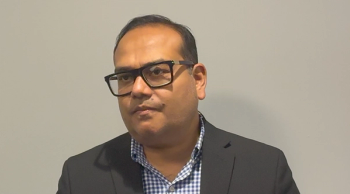
Brendan F. Kennedy, PhD, on a New Imaging Technique for Breast Cancer
Brendan F. Kennedy, PhD, discussed this study which evaluated the accuracy of quantitative micro-elastography compared to optical coherence tomography.
In an interview with CancerNetwork®, Brendan F. Kennedy, PhD, associate professor in the School of Engineering at The University of Western Australia and laboratory head of BRITElab at the Harry Perkins Institute of Medical Research in Perth, Western Australia, spoke about his study of a new high-resolution, three-dimensional imaging technique.
The study, published in Cancer Research, used breast tissue to evaluate the accuracy of quantitative micro-elastography (QME), which can generate three-dimensional maps of local elasticity, compared to optical coherence tomography (OCT), which is an imaging technique that generates three-dimensional images of tissue.
“If the results that we found in this study bear truth to actual patients and treatments, it could mean that there’s a very good chance that the number of patients that need to go back for additional surgery following breast conserving surgery should be reduced quite significantly,” said Kennedy.
Using surgical samples from 71 patients who received breast-conserving surgery, the researchers determined the ability of OCT and QME to detect cancer within 1 mm of the surgical margins, as compared with gold-standard post-operative histology. Based on the cumulative results, OCT images resulted in a 69.0% sensitivity, 79.0% specificity, and 77.5% accuracy for detecting cancer within 1 mm of the surgical margin. Further, QME images resulted in a 92.9% sensitivity, 96.4% specificity, and 95.8% accuracy for detecting cancer within 1 mm of the surgical margin.
Additionally, the quantitative nature of QME also facilitated the development of an automated reader, which therein resulted in 100.0% sensitivity and 97.7% specificity. Overall, the results presented in the study demonstrated high accuracy of QME for detecting tumors within 1 mm of the margin and the potential for this technique to improve outcomes in breast-conserving surgery.
“We focused mainly on breast cancer just to make sure we could get as much progress in 1 area rather than spreading ourselves too thin, but we’ve certainly assessed the potential of the technology in a range of other cancers,” Kennedy said. “Really, it becomes where is this sort of niche technology suitable.”
This segment comes from the CancerNetwork® portion of the MJH Life Sciences National Broadcast, airing daily on all MJH Life Sciences channels.
Reference:
Kennedy KM, Zilkens R, Allen WM, et al. Diagnostic Accuracy of Quantitative Micro-Elastography for Margin Assessment in Breast-Conserving Surgery. Cancer Research. doi:10.1158/0008-5472.CAN-19-1240.
Newsletter
Stay up to date on recent advances in the multidisciplinary approach to cancer.



















































































